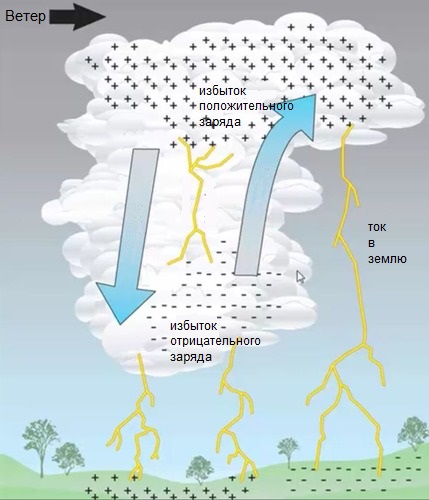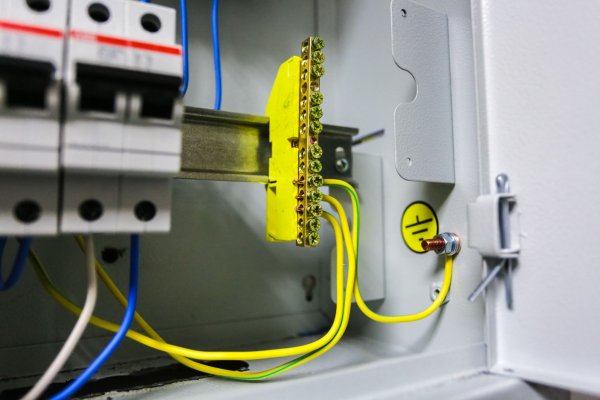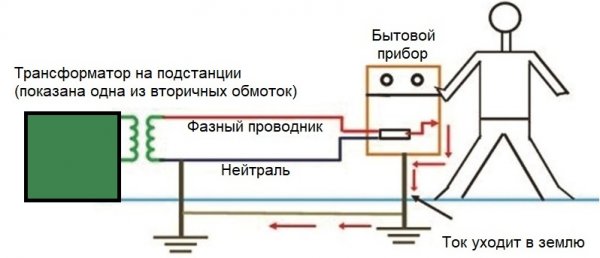Why current enters the ground
Why does electric current enter the ground? But this question cannot be addressed to all electrical circuits, so let's make it a little more complicated. In what cases and why does the current go to ground?
Let's start with a simple example. Surely each of us had to observe such a natural phenomenon as lightning. Lightning — there is nothing more than a brief current leaving a thundercloud in the ground. Why is this happening?
It is known from the school physics course:
1 — that charges of opposite signs tend to attract each other;
2 — the direction of the current in the conductor is taken as the direction opposite to the direction of movement of negatively charged particles — electrons (for ionized gases or electrolytes — opposite to the direction of movement of negative ions, and for semiconductors — opposite to the direction of movement of « holes").

So, in terms of lightning, we can say that when a thundercloud is positively charged, and the surface of the ground below the cloud is negatively charged (the opposite happens! See the figure), under certain conditions (temperature, pressure, humidity), in atmosphere an air breakdown occurs when electrons from the ground rush into a positively charged thundercloud, meaning in this particular case the current really "goes into the ground" simply because charges of opposite signs are attracted.
Recharge capacitor, and let its negatively charged plate symbolize the earth and its positively charged a thundercloud. Close the terminals with a screwdriver - get a current "that goes into the ground" - a miniature analogue of lightning from a cloud - into the ground. If the charge on the ground were equal to the charge on a thundercloud (analogy — a discharged capacitor), then the discharge would not occur and the current "would not go into the ground."
Let's talk now on alternating current electrical networksused in most industries, in buildings where people work, as well as in our homes for domestic power supply. These are the so-called «earthed neutral networks».
Neutral, in relation to these networks, necessarily means the grounded terminal of the secondary winding industrial three-phase transformer (he stands at the substation) from which our apartments receive the same 220 volts per phase at the outlet.
A wire connected to a solid earthed neutral is called «PEN». The phase conductors are actually the opposite terminals of a given three-phase winding, the "neutral point" of which is grounded in accordance with safety requirements - this is an accepted standard in electrical engineering.
What happens if one of the phase wires accidentally comes into contact with the conductive body of some device, provided that this body is connected to the PEN wire?
The circuit of the phase housing-conductor will close KHIMILKA (connected to the ground and to the neutral of the transformer in the substation), in this case the protective device, as a rule, installed in all conscientiously designed electrical networks, should work. Can we say that in this case "the current has penetrated the ground"? Only conditionally, if you call the ground the place of connection to the ground of the neutral output of the transformer in the substation.
But what if the PEN wire is practically absent and a local ground is used instead, roughly speaking a metal pin or circuit inserted into the ground? What then?
In a similar situation with the phase striking the case, the current will rush to the same transformer terminal grounded in the substation, and that current will flow right through the soil, literally through the ground, paving the path of least resistance from the local ground to grounded conductors , connected to the same substation neutral.
In this situation the current will indeed leave the phase to earth, but the earth will only serve as a conductor, since in practice the current will be directed to the neutral of the transformer far away in the substation, and that current will flow through the earth only because that neutral is earthed, that is the current in this case will be forced to "enter the ground" in search of the path of least resistance.
See also: Actions of electric current: thermal, chemical, magnetic, light and mechanical


